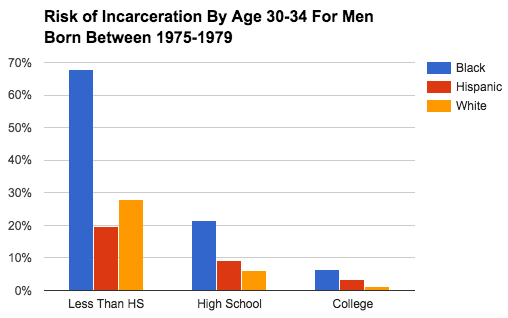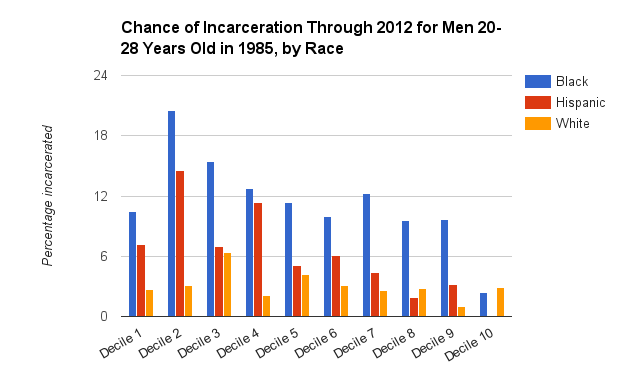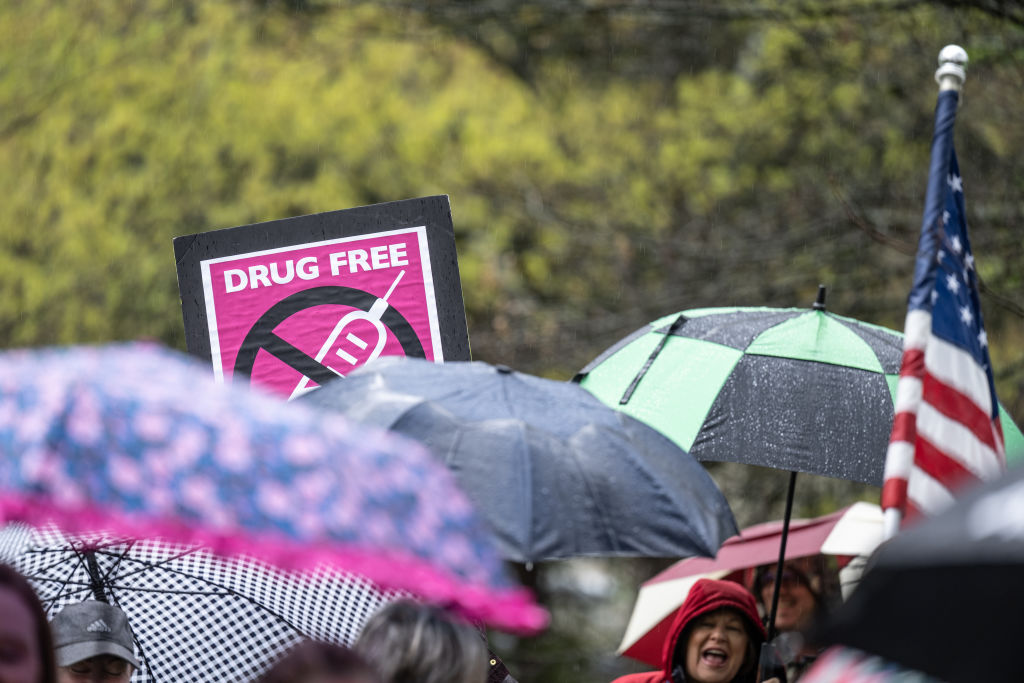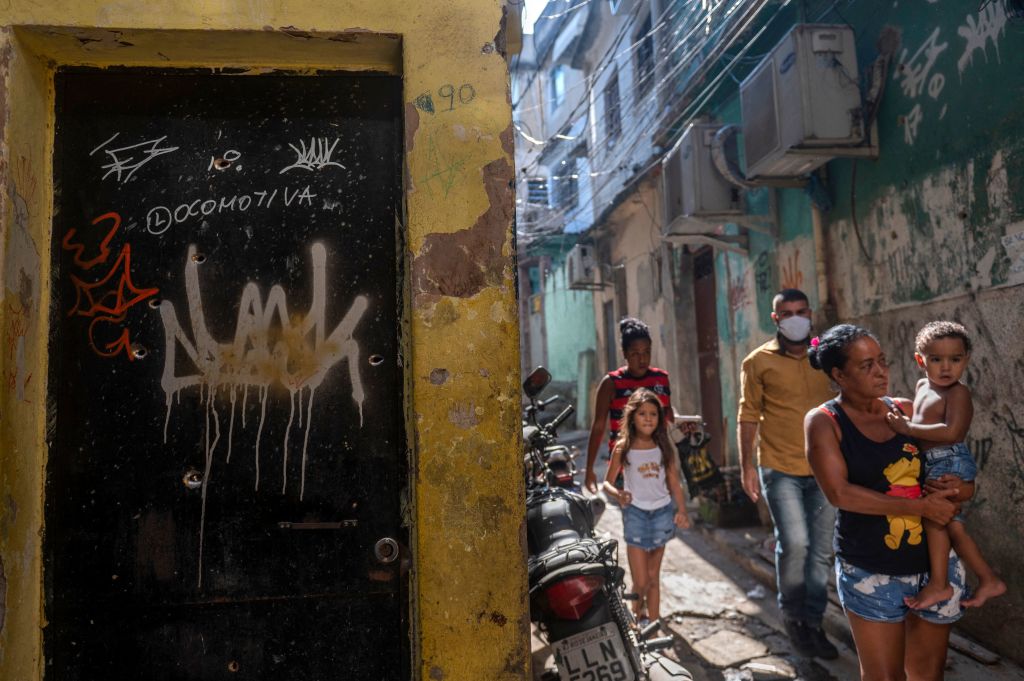This landmark prison study has 1 big problem
Some rich kids were probably counted as poor


What is the root of black America's incarceration problem? Are racist attitudes among cops to blame? Disproportionately high poverty among black people? Or some combination of the two?
Several months ago, three academics, Khaing Zaw, Darrick Hamilton, and William Darity, published a study that seemed to point to the first answer. The study had a number of interesting and worthwhile findings, but what got the most media attention was the breakthrough discovery that poor white people were dramatically less likely to go to prison than all but the richest black people. "Race trumps class, at least when it comes to incarceration," Hamilton told The Washington Post.
This was sharply at odds with previous studies that found incarceration very heavily concentrated among poor people of all races, but most especially blacks. If Zaw, Hamilton, and Darity's finding is correct, then anti-poverty policy will be less useful for fighting police brutality than previously supposed.
The Week
Escape your echo chamber. Get the facts behind the news, plus analysis from multiple perspectives.

Sign up for The Week's Free Newsletters
From our morning news briefing to a weekly Good News Newsletter, get the best of The Week delivered directly to your inbox.
From our morning news briefing to a weekly Good News Newsletter, get the best of The Week delivered directly to your inbox.
However, one problem with the study leaps out: Its definition of class makes little sense. It labeled people as poor or rich based on their wealth at age 20 to 28, and then followed them through 2012 to see which ones went to jail. But a 20-something's net worth is an unreliable marker of his future wealth.
A more classic marker is education, which you can see in this chart from sociologists Bruce Western and Becky Pettit. It looks at the chance of incarceration for males born between 1975-79, broken down by race and educational attainment. This is a similar sort of study to Zaw et al's, one that looks at people over a long period of time to see which ones went to jail:

The key thing about this chart is the tremendous scale between education levels. Here, low-class means "did not graduate from high school," while high-class is anyone who attended any college. By this metric, low-class blacks are about 10 times more likely to be incarcerated than high-class ones. Low-class whites do much better, but are still about four times more likely to be incarcerated than high-class blacks. Therefore, insofar as low-class people are subject to police attention and abuse simply due to poverty (the case for which is strong), it suggests that flooding the bottom of the economic ladder with resources would make a large dent in police brutality, with blacks the largest beneficiaries.
By contrast, here is Zaw et al's finding on this question. They break their male study population into tenths based on their wealth in 1985, when they were 20 to 28 years old, then see what percentage eventually landed behind bars up through 2012:
A free daily email with the biggest news stories of the day – and the best features from TheWeek.com

(Graph produced from Race and Social Problems)
The surprising result here is not their finding about black versus white, it is how spread out prison chances are across class — most staggering, that there is no class trend at all among white people. The richest tenth (by their definition) of whites was actually somewhat more likely to go to prison than the poorest tenth. For anyone who has reported on the criminal justice system, that is a pretty suspect finding. In our country, it is obvious that more money almost always buys more lenient treatment from the cops and the courts — if not an escape from law enforcement attention altogether.
But as I mentioned earlier, Zaw et al's notion of class is suspect. People aged 20 to 28 are, at most, only a few years out of college or still enrolled in graduate school. They may have taken out student loans or borrowed to buy a house or car, putting them temporarily into debt. In fact, people do not reach their prime-earning years until about age 45. Perhaps most glaringly, most high-class 28-year-olds simply haven't inherited the family wealth yet.
I asked Hamilton and Darity about these issues over email. They acknowledged that it could raise problems, but argued the metric was still useful. "Individuals who have relatively high levels of net worth at ages 20 to 28 are likely to be best positioned for still higher levels of net worth later," wrote Darity. Hamilton added that as the study was focused on racial comparisons, "it is surprising to see the vulnerability of the 'exceptional' black with moderate to high wealth who is still vulnerable to incarceration."
Fair points. Still, by relying on net worth — calculated as assets minus liabilities — as the only marker of class, they may be letting higher-class 20-somethings temporarily appear towards the bottom of the wealth ladder.
To test this hypothesis, I dug into the Survey of Consumer Finances microdata from 1989, broke the under-35 population into fifths based on wealth, and calculated the educational attainment within each group. (We want old data so as to be as close as possible to the 1985 year from the study, and I used a bit of an older age and fifths to increase the sample size.) Because educational attainment correlates very strongly with wealth over the whole population, if there were a lot of higher-class people temporarily appearing as low-wealth, that would show up as unusually well-educated lower-wealth brackets. Here is the result:

Just as I thought! In 1989, the "poorest" under-35 families (quintile 1) were actually more educated than the next 40 percent (quintiles 2 and 3), with a majority having at least some college attendance — indeed, they were only slightly less educated than the fourth quintile.
Now, the bottom quintile was the only absolute exception from the pattern of more education equaling more wealth, but the fact that it broke the trend implies that the rest of the lower-down quintiles appear less wealthy than they eventually will be after they reach prime-earning years and claim their inheritances.
To be fair, this doesn't bear on the study's other conclusions, like that more wealth means a greater chance of avoiding prison. And it is unquestionably true that within any class group, blacks are more likely to be incarcerated than whites. But it is strong circumstantial evidence that Zaw et al's chart is overstating the likelihood of incarceration for high-class people — and understating it for low-class people. Western and Pettit's educational definition of class looks like the better one, overall.
All this is not to say that racist attitudes are unimportant, or that class is somehow more important than race. Rather it means that a huge chunk of American racism is expressed via systematic material deprivation. In order to achieve anything approximating justice for African-Americans in the criminal justice system (and in general), it is vitally important to eradicate poverty in addition to purging racist bias wherever possible.
Ryan Cooper is a national correspondent at TheWeek.com. His work has appeared in the Washington Monthly, The New Republic, and the Washington Post.
-
 Democrats seek 2026 inspiration from special election routs
Democrats seek 2026 inspiration from special election routsIN THE SPOTLIGHT High-profile wins are helping a party demoralized by Trump’s reelection regain momentum
-
 Film reviews: ‘Bugonia,’ ‘The Mastermind,’ and ‘Nouvelle Vague’
Film reviews: ‘Bugonia,’ ‘The Mastermind,’ and ‘Nouvelle Vague’feature A kidnapped CEO might only appear to be human, an amateurish art heist goes sideways, and Jean-Luc Godard’s ‘Breathless’ gets a lively homage
-
 ‘Not all news is bad’
‘Not all news is bad’Instant Opinion Opinion, comment and editorials of the day
-
 'Once the best in the Middle East,' Beirut hospital pleads for fuel as it faces shutdown
'Once the best in the Middle East,' Beirut hospital pleads for fuel as it faces shutdownSpeed Read
-
 Israeli airstrikes kill senior Hamas figures
Israeli airstrikes kill senior Hamas figuresSpeed Read
-
 An anti-vax conspiracy theory is apparently making anti-maskers consider masking up, social distancing
An anti-vax conspiracy theory is apparently making anti-maskers consider masking up, social distancingSpeed Read
-
 Fighting between Israel and Hamas intensifies, with dozens dead
Fighting between Israel and Hamas intensifies, with dozens deadSpeed Read
-
 United States shares 'serious concerns' with Israel over planned evictions
United States shares 'serious concerns' with Israel over planned evictionsSpeed Read
-
 Police raid in Rio de Janeiro favela leaves at least 25 dead
Police raid in Rio de Janeiro favela leaves at least 25 deadSpeed Read
-
 Derek Chauvin's attorney files motion for new trial
Derek Chauvin's attorney files motion for new trialSpeed Read
-
 At least 20 dead after Mexico City commuter train splits in overpass collapse
At least 20 dead after Mexico City commuter train splits in overpass collapseSpeed Read
